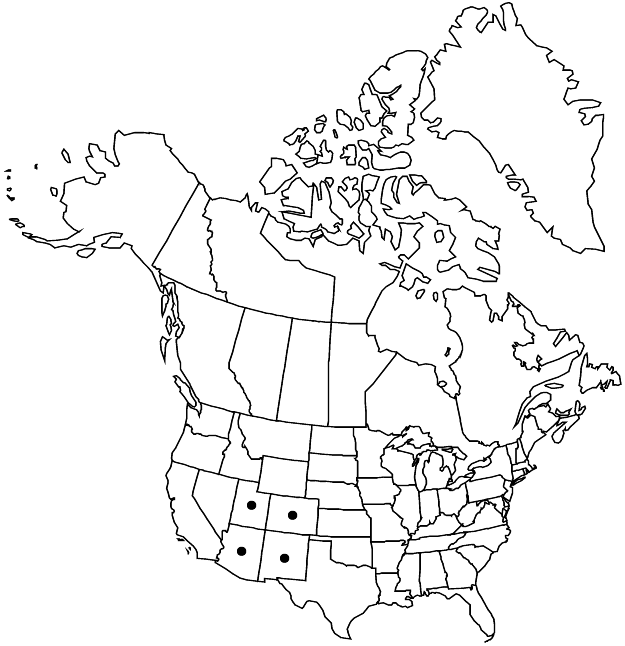Difference between revisions of "Eriogonum wetherillii"
Proc. Calif. Acad. Sci., ser. 2, 6: 319. 1896.
FNA>Volume Importer |
FNA>Volume Importer |
||
| Line 54: | Line 54: | ||
|publication year=1896 | |publication year=1896 | ||
|special status= | |special status= | ||
| − | |source xml=https://jpend@bitbucket.org/aafc-mbb/fna-data-curation.git/src/ | + | |source xml=https://jpend@bitbucket.org/aafc-mbb/fna-data-curation.git/src/f6b125a955440c0872999024f038d74684f65921/coarse_grained_fna_xml/V5/V5_838.xml |
|subfamily=Polygonaceae subfam. Eriogonoideae | |subfamily=Polygonaceae subfam. Eriogonoideae | ||
|genus=Eriogonum | |genus=Eriogonum | ||
Revision as of 20:10, 24 September 2019
Herbs, spreading, annual, 0.5–2.5 dm, glabrous, reddish green to reddish. Stems: caudex absent; aerial flowering stems erect, solid, not fistulose, 0.1–0.4 dm, glabrous except somewhat villous proximally. Leaves basal; petiole 1–5 cm, tomentose to floccose; blade oblong to orbiculate, (0.5–)1–4 × (0.5–)1–3 cm, densely white-tomentose abaxially, floccose to glabrate and reddish or greenish adaxially, margins plane. Inflorescences cymose, diffuse, flat-topped to rounded, 5–20 × 10–35 cm; branches glabrous; bracts 3, scalelike, 0.5–2 × 1–2 mm. Peduncles erect, straight, filiform, (0.3–)0.5–1 cm, glabrous, rarely absent distally. Involucres turbinate, (0.3–)0.5–1 × (0.2–)0.5–1 mm, glabrous; teeth 4, erect, 0.1–0.3 mm. Flowers 0.5–1.2 mm in early anthesis, becoming 1–1.5 mm; perianth yellowish to red in early anthesis, becoming pink to rose, glabrous; tepals monomorphic, elliptic to obovate; stamens included to slightly exserted, 0.7–1 mm; filaments glabrous. Achenes dark brown to black, lenticular, 0.6–1 mm, glabrous.
Phenology: Flowering Apr–Oct.
Habitat: Sandy to clayey flats, washes, and slopes, saltbush, greasewood, blackbrush, and creosote bush communities, oak and pinyon and/or juniper woodlands
Elevation: 1000-2100(-2700) m
Distribution

Ariz., Colo., N.Mex., Utah.
Discussion
Eriogonum wetherillii is a species of the Colorado Plateau in northern Arizona (Apache, Coconino, and Navajo counties), southwestern Colorado (Montezuma County), northwestern New Mexico (San Juan County), and southeastern Utah (Emery, Garfield, Grand, Kane, San Juan, eastern Sevier, and Wayne counties). It typically is locally common, especially on sandy soils, but only rarely weedy.
Selected References
None.